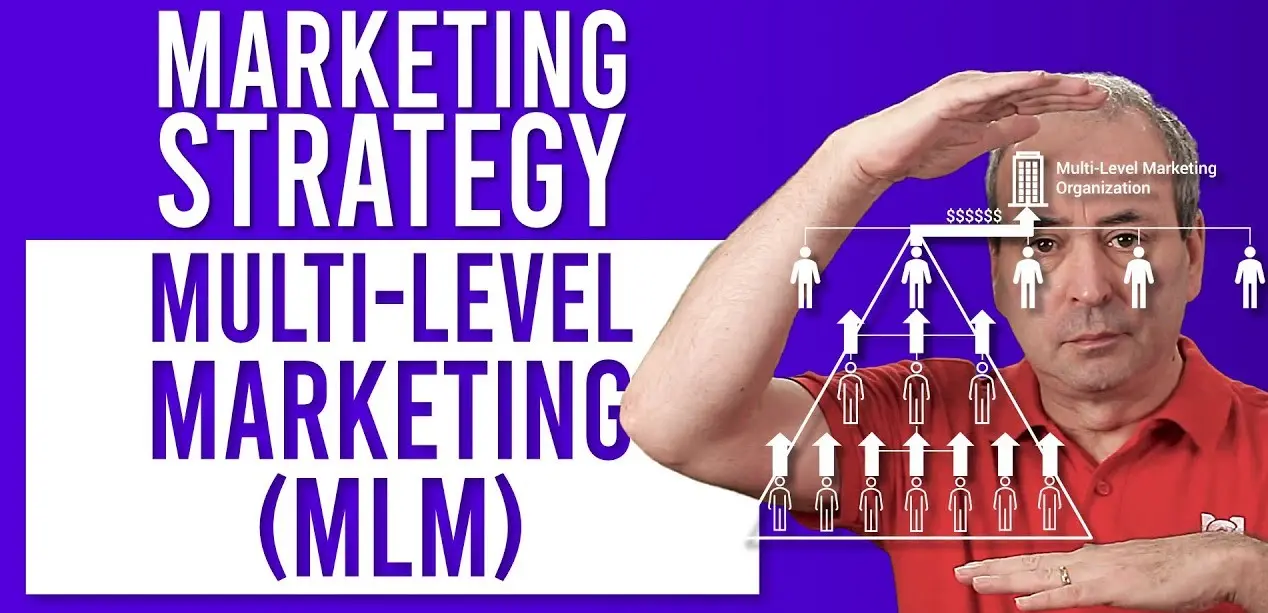Multi-Level Marketing strategies have gained significant attention in the realm of business and entrepreneurship. This marketing approach involves building a network of distributors who not only sell products or services but also recruit others to join the network.
With its unique structure and incentives, MLM has become a popular avenue for individuals seeking entrepreneurial opportunities and companies aiming to expand their reach. In this exploration of Multi-Level Marketing Strategies, we will delve into various techniques and tactics used to maximize success in this dynamic field.
Understanding Multi-Level Marketing strategies

Multi-Level Marketing Strategies encompass a range of techniques and approaches aimed at driving sales, building networks, and maximizing earnings within the MLM business model.
These strategies leverage the unique structure of MLM, which relies on a network of distributors or representatives who not only sell products or services but also recruit and train others to do the same. To gain a deeper understanding of Multi-Level Marketing Strategies, it’s essential to explore key components and tactics employed by successful MLM companies:
-
Product Selection and Positioning:
Choosing the right product or service is crucial for MLM success. Products should have mass appeal, unique features, and high perceived value.
Effective positioning involves highlighting the benefits, addressing consumer needs, and differentiating from competitors.
-
Building a Strong Network:
MLM thrives on building a robust network of distributors. Strategies include identifying potential recruits, nurturing relationships, and offering incentives for recruitment.
Training and support programs are essential for empowering distributors to succeed and grow their networks.
-
Sales and Marketing Techniques:
Direct selling remains a cornerstone of Multi-Level Marketing Strategies. Distributors are encouraged to engage in one-on-one sales presentations, home parties, and product demonstrations.
Online marketing channels, including social media, websites, and email marketing, are increasingly utilized to reach a broader audience and attract new recruits.
-
Compensation Plans:
MLM compensation plans, such as binary, unilevel, or matrix structures, play a significant role in motivating distributors and rewarding their efforts.
Strategies for designing compensation plans involve balancing incentives for both sales and recruitment, ensuring fairness and sustainability.
-
Compliance and Legal Considerations:
MLM companies must navigate complex legal and regulatory frameworks to ensure compliance with consumer protection laws and regulations governing the industry.
Strategies for maintaining compliance include transparent business practices, clear communication of earnings potential, and adherence to ethical standards.
-
Performance Tracking and Evaluation:
Monitoring key performance indicators (KPIs) such as sales volume, recruitment rates, and retention rates is essential for assessing the effectiveness of MLM strategies.
Data-driven insights enable MLM companies to identify areas for improvement, optimize resource allocation, and measure the impact of strategic initiatives.
-
Continuous Innovation:
Successful MLM companies embrace innovation and adapt to evolving market trends and consumer preferences.
Strategies for innovation include introducing new products, enhancing existing offerings, and leveraging technology to streamline operations and enhance the distributor experience.
By understanding and implementing these Multi-Level Marketing Strategies effectively, companies can navigate the complexities of the MLM landscape, drive growth, and create sustainable business success for themselves and their distributors.
Blockchain Multi Level Marketing
Target Market Analysis

Target market analysis is a fundamental aspect of Multi-Level Marketing Strategies, as it involves identifying and understanding the specific audience segments that are most likely to be interested in the products or services being offered. Here’s a breakdown of the key components of target market analysis in the context of MLM:
-
Identification of Target Audience:
MLM companies begin by defining their target audience based on factors such as demographics (age, gender, income level), psychographics (lifestyle, interests, values), and geographic location.
For example, a company selling health and wellness products might target health-conscious individuals, fitness enthusiasts, or those seeking alternative healthcare solutions.
-
Understanding Buyer Persona:
Developing detailed buyer personas helps MLM companies gain deeper insights into the motivations, preferences, and pain points of their target audience.
Buyer personas are fictional representations of ideal customers, incorporating information such as their background, goals, challenges, and purchasing behavior.
By understanding buyer personas, MLM companies can tailor their marketing messages, product offerings, and recruitment strategies to resonate with their target audience.
-
Market Research Techniques:
Market research plays a crucial role in target market analysis, providing valuable data and insights that inform decision-making.
MLM companies utilize various market research techniques, including surveys, focus groups, interviews, and data analysis, to gather information about their target audience’s preferences, buying habits, and competitors.
By conducting thorough market research, MLM companies can identify opportunities for product innovation, understand market trends, and refine their marketing strategies to better meet the needs of their target audience.
-
Segmentation and Targeting:
Once the target audience has been identified, MLM companies may further segment the market into smaller, more defined groups based on specific criteria.
Segmentation allows companies to tailor their marketing efforts more effectively and address the unique needs and preferences of different customer segments.
Targeting involves selecting the most promising segments to focus on, based on factors such as size, growth potential, and alignment with the company’s objectives and capabilities.
-
Competitive Analysis:
Analyzing competitors is an integral part of target market analysis, as it provides insights into the competitive landscape, market trends, and opportunities for differentiation.
MLM companies assess competitors’ products, pricing strategies, distribution channels, and marketing tactics to identify areas where they can gain a competitive advantage.
By understanding their competitors’ strengths and weaknesses, Multi-Level Marketing Strategies companies can refine their own strategies and position themselves more effectively in the market.
Overall, target market analysis enables Multi-Level Marketing Strategies companies to identify and prioritize opportunities for growth, tailor their marketing efforts to effectively reach their target audience, and differentiate themselves from competitors in a competitive marketplace.
By continually evaluating and refining their understanding of the target market, MLM companies can optimize their strategies and maximize their success in driving sales and recruitment efforts.
Features Of Multi Level Marketing
Product Selection and Positioning
Product selection and positioning are pivotal elements in the success of Multi-Level Marketing Strategies. Choosing the right product or service is essential to appeal to the target audience and differentiate from competitors. Additionally, effective positioning involves highlighting the unique features and benefits of the product, addressing consumer needs, and creating a compelling value proposition.
By carefully selecting and positioning their offerings, Multi-Level Marketing Strategies MLM companies can maximize sales potential, attract distributors, and establish a strong foothold in the market.
Insights into Multi-Level Marketing Statistics
Building a Strong Network

Building a robust network is the cornerstone of Multi-Level Marketing Strategies success. MLM companies rely on a network of distributors or representatives to sell products or services and recruit others into the business. To build a strong network, Multi-Level Marketing Strategies companies focus on identifying potential recruits, nurturing relationships, and providing training and support to empower distributors to succeed.
By fostering a supportive and collaborative network, MLM companies can amplify their reach, drive sales, and create a thriving community of distributors dedicated to achieving shared goals.
Effective Sales and Marketing Strategies
Effective sales and marketing strategies are vital for the success of Multi-Level Marketing Strategies ventures. These strategies encompass various approaches, including direct selling techniques, online marketing channels, and engaging content creation. Distributors are trained to leverage personal relationships and persuasive communication to drive sales and recruit new members.
Moreover, Multi-Level Marketing Strategies companies harness the power of digital platforms such as social media, websites, and email marketing to reach a broader audience and attract potential customers and recruits. By combining traditional sales methods with modern digital marketing tactics, MLM companies can enhance their visibility, generate leads, and ultimately achieve greater success in the competitive marketplace.
Multi Level Marketing Referral Program
Providing Ongoing Support
Providing ongoing support to distributors is crucial for maintaining their motivation, improving their skills, and ensuring their long-term success in Multi-Level Marketing (MLM). Here are key points to consider when implementing ongoing support programs:
-
Mentorship Programs
Pairing new distributors with experienced mentors who can provide guidance, advice, and encouragement.
Offering regular one-on-one mentoring sessions to address challenges, set goals, and track progress.
-
Training Sessions:
Conducting regular training sessions to educate distributors on product knowledge, sales techniques, and effective recruiting strategies.
Utilizing online webinars, workshops, and seminars to reach a geographically diverse audience and provide convenient learning opportunities.
-
Motivational Programs:
Recognizing and rewarding distributors for their achievements and milestones, such as reaching sales targets or recruiting goals.
Organizing incentive programs, contests, and rewards to incentivize performance and foster healthy competition among distributors.
-
Educational Resources:
Providing access to a variety of educational resources, including training manuals, videos, podcasts, and online courses.
Creating a centralized knowledge hub or learning platform where distributors can access relevant information, tools, and support materials.
-
Community Engagement:
Facilitating networking opportunities and community events where distributors can connect, share experiences, and learn from each other.
Establishing online forums, social media groups, and discussion boards to encourage collaboration and communication among distributors.
-
Regular Communication:
Maintaining open lines of communication with distributors through regular updates, newsletters, and email campaigns.
Soliciting feedback and input from distributors to understand their needs, challenges, and suggestions for improvement.
-
Continuous Improvement:
Monitoring the effectiveness of ongoing support programs through feedback surveys, performance metrics, and distributor satisfaction ratings.
Iterating and refining support initiatives based on insights gathered from distributors and changes in the market landscape.
By prioritizing ongoing support initiatives, MLM companies can empower their distributors to achieve their goals, build sustainable businesses, and contribute to the overall success of the organization.
Compliance and Legal Considerations
Compliance with legal regulations and ethical standards is paramount in Multi-Level Marketing Strategies ventures. Multi-Level Marketing Strategies companies must adhere to consumer protection laws, regulatory requirements, and industry guidelines to ensure transparency and fairness in their operations.
This includes providing clear and accurate information about earnings potential, avoiding deceptive or misleading marketing practices, and implementing measures to prevent fraudulent activities.
By prioritizing compliance and ethical business practices, Multi-Level Marketing Strategies companies can build trust with distributors, protect their reputation, and mitigate legal risks, ultimately fostering a sustainable and responsible business environment.
Tracking and Measuring Performance

Tracking and measuring performance is essential in Multi-Level Marketing Strategies to assess the effectiveness of strategies and optimize outcomes. Here are key aspects to consider:
-
Key Performance Indicators (KPIs):
Identify relevant KPIs such as sales volume, recruitment rates, retention rates, and revenue growth.
Set measurable goals and benchmarks to track progress and evaluate performance.
-
Analytics and Reporting Tools:
Utilize analytics tools to collect and analyze data on sales, recruitment, and other key metrics.
Generate regular reports to gain insights into trends, identify areas for improvement, and make informed decisions.
-
Distributor Performance:
Monitor individual distributor performance to identify top performers, address underperformance, and provide targeted support and training.
Recognize and reward distributors for their achievements to incentivize continued success.
Conclusion
In conclusion, Multi-Level Marketing Strategies encompass a diverse range of techniques and approaches aimed at driving sales, building networks, and maximizing earnings within the MLM business model.
From product selection and positioning to providing ongoing support and ensuring compliance with legal and ethical standards, successful Multi-Level Marketing Strategies companies employ a holistic approach to achieve their goals.
By understanding their target market, implementing effective sales and marketing strategies, and continuously tracking and measuring performance, MLM companies can navigate the complexities of the industry and create sustainable growth opportunities for themselves and their distributors.
Despite the challenges and controversies associated with Multi-Level Marketing Strategies, when executed ethically and responsibly, Multi-Level Marketing Strategies have the potential to empower individuals, foster entrepreneurship, and contribute positively to the economy.
Other Questions
- What is the importance of target market analysis in MLM?
Target market analysis helps MLM companies identify the most promising audience segments and tailor their strategies to meet their needs effectively.
- How can MLM companies build a strong network?
MLM companies can build a strong network by identifying potential recruits, providing training and support, and fostering a collaborative and supportive community among distributors.
- What are some effective sales and marketing strategies in MLM?
Effective sales and marketing strategies in MLM include direct selling techniques, leveraging online marketing channels, and creating engaging content to attract customers and recruits.




